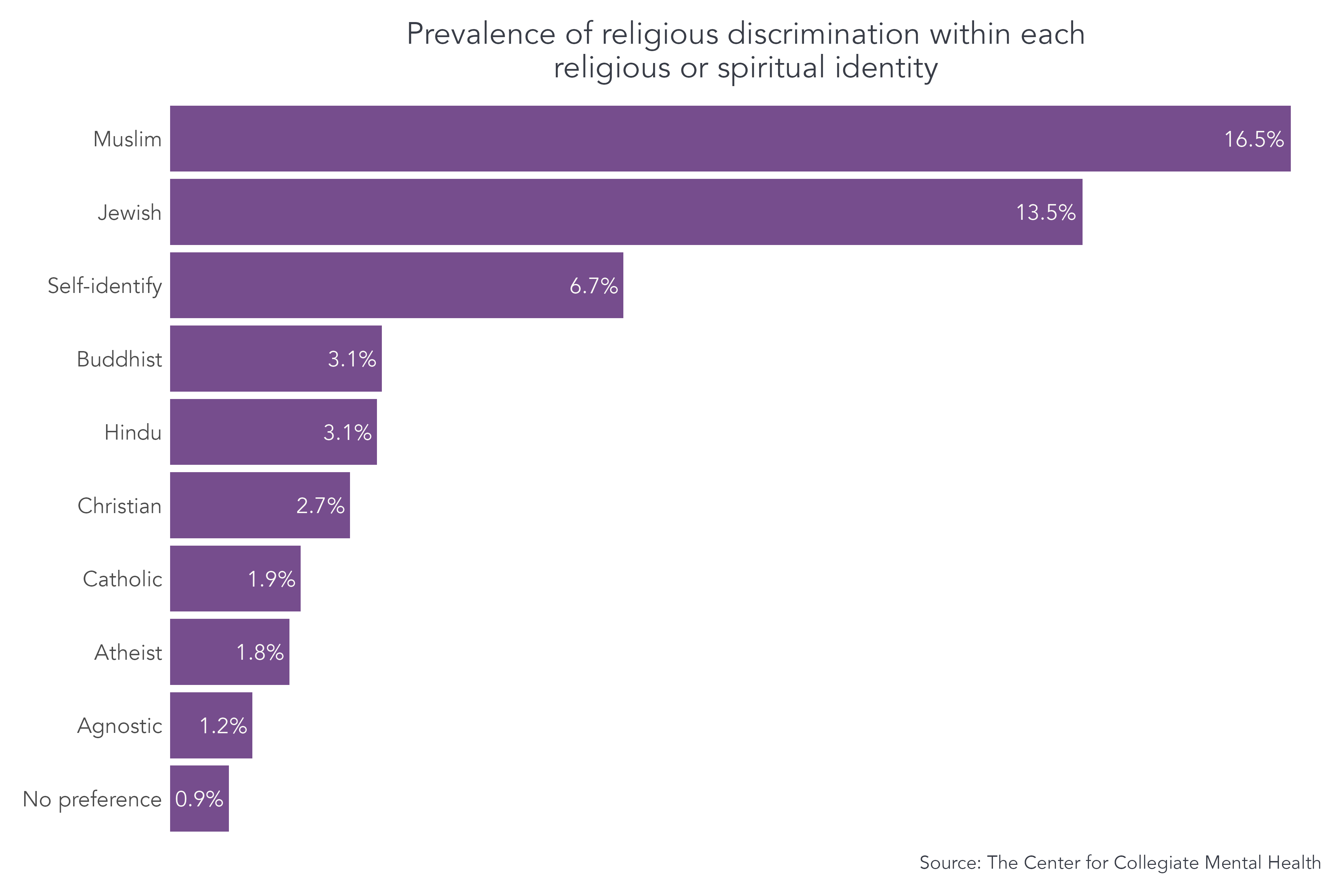The Prevalence of Discrimination Within Different Identities
Previous research has demonstrated that discrimination is associated with elevated mental health symptoms (e.g., Bravo et al., 2023; CCMH, 2023; Oh et al., 2018; Paradies et al., 2015). In the CCMH 2023 Annual Report, we examined the relationship between identity-based discrimination and mental health symptoms in a large national sample of college students seeking treatment at university/college counseling centers (UCCs) between 2021 and 2023. Discrimination was strongly related to increased general distress, social isolation, and suicidal ideation. Counseling centers were shown to effectively treat student clients with experiences of discrimination: those who reported discrimination showed similar levels of improvement in symptoms of distress, social isolation, and suicidal ideation during services as students with no discrimination. However, students who reported discrimination consistently began and ended treatment with higher average levels of distress, demonstrating a persistent outcome disparity.
While the CCMH 2023 Annual Report revealed that approximately 20% of the overall national sample experienced recent identity-based discrimination, there were remaining questions regarding the prevalence of discrimination within various identity groups (e.g., gender, sexual orientation, race/ethnicity, registered disability, international student status, religious affiliation, country of origin). This blog examines the rates of specific identity-based discrimination within the corresponding identity group (e.g., religious discrimination among clients with various religious identities).
The sample used for this blog included 78,439 students who received mental health treatment at 85 UCCs between 2021 and 2023. Data on discrimination and identities were collected using the national Standardized Data Set (SDS). Students were asked, “In the past 6 months, have you experienced discrimination or unfair treatment due to any of the following parts of your identity?” Students responded yes or no for each of the following six identities: Disability, Gender, Nationality/Country of Origin, Race/Ethnicity/Culture, Religion, and Sexual Orientation. The analyses below outline the frequencies and percentages of clients within each identity group who reported discrimination specifically related to that identity status.
Prevalence of nationality/country of origin discrimination among international students
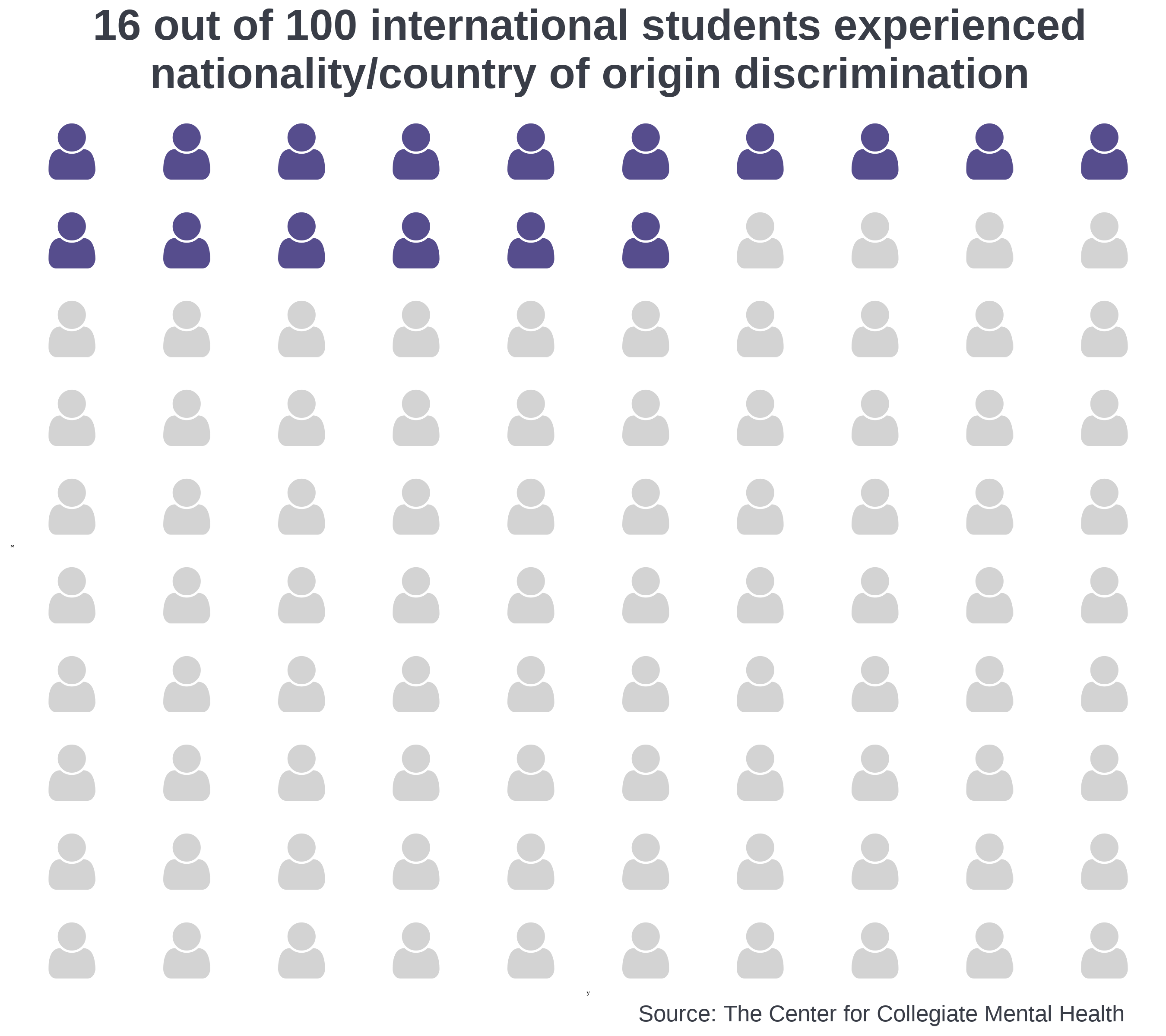
Prevalence of nationality/country of origin discrimination within country of origin

Prevalence of racial/ethnic/cultural discrimination within each race/ethnicity
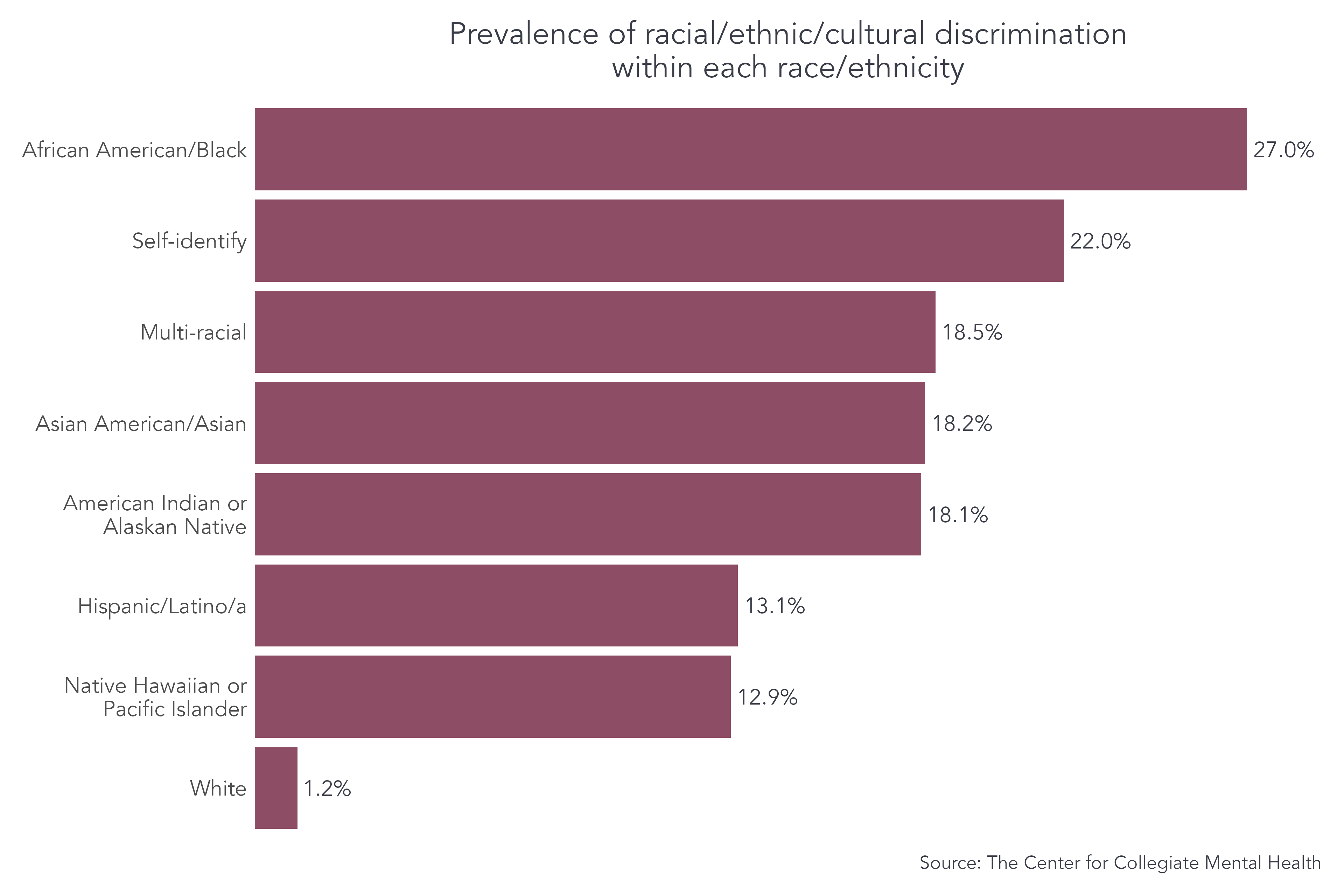
Prevalence of religious discrimination within each religious or spiritual identity
Prevalence of gender discrimination within each gender identity
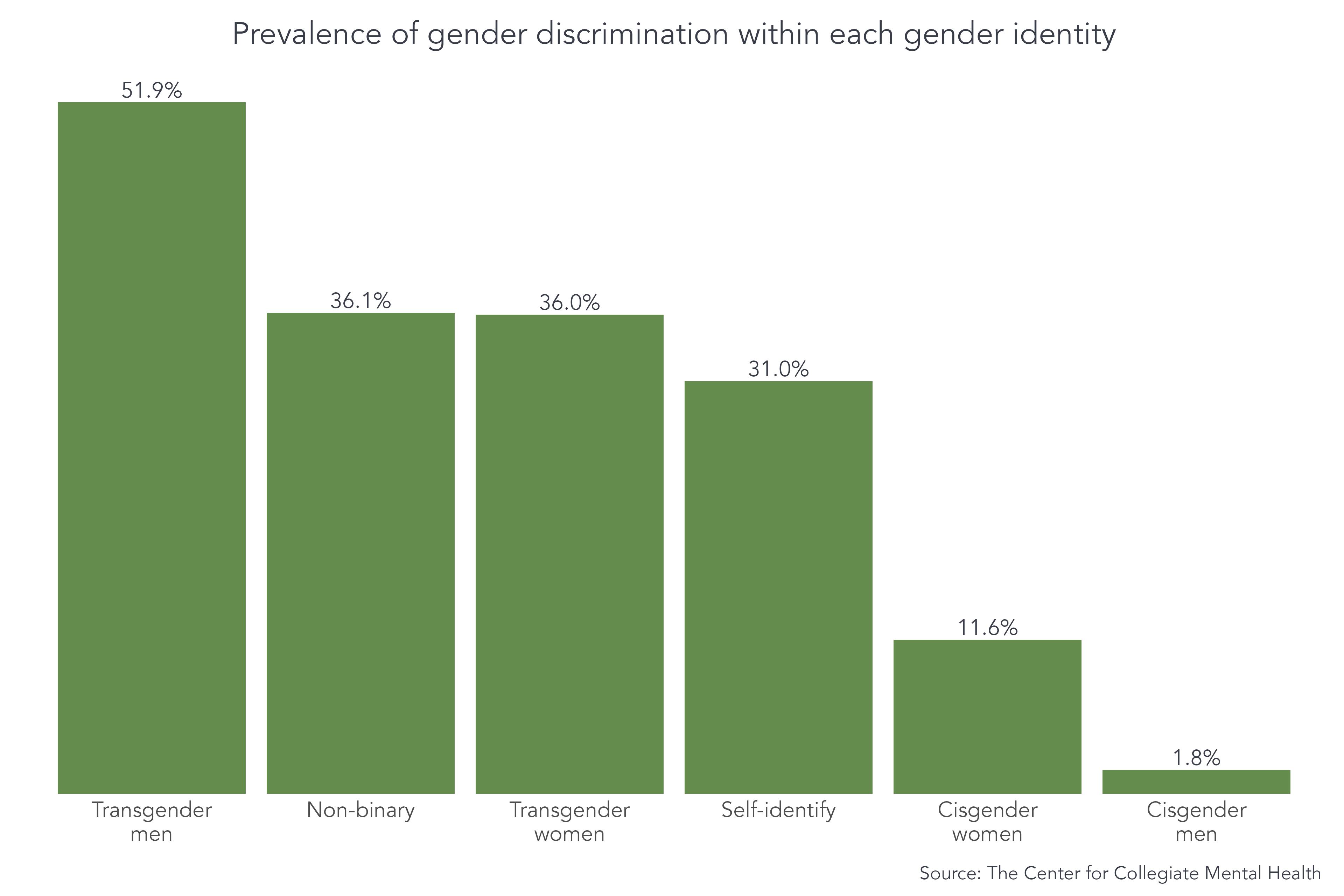
Prevalence of sexual orientation discrimination within each sexual orientation

Prevalence of disability discrimination within each registered disability
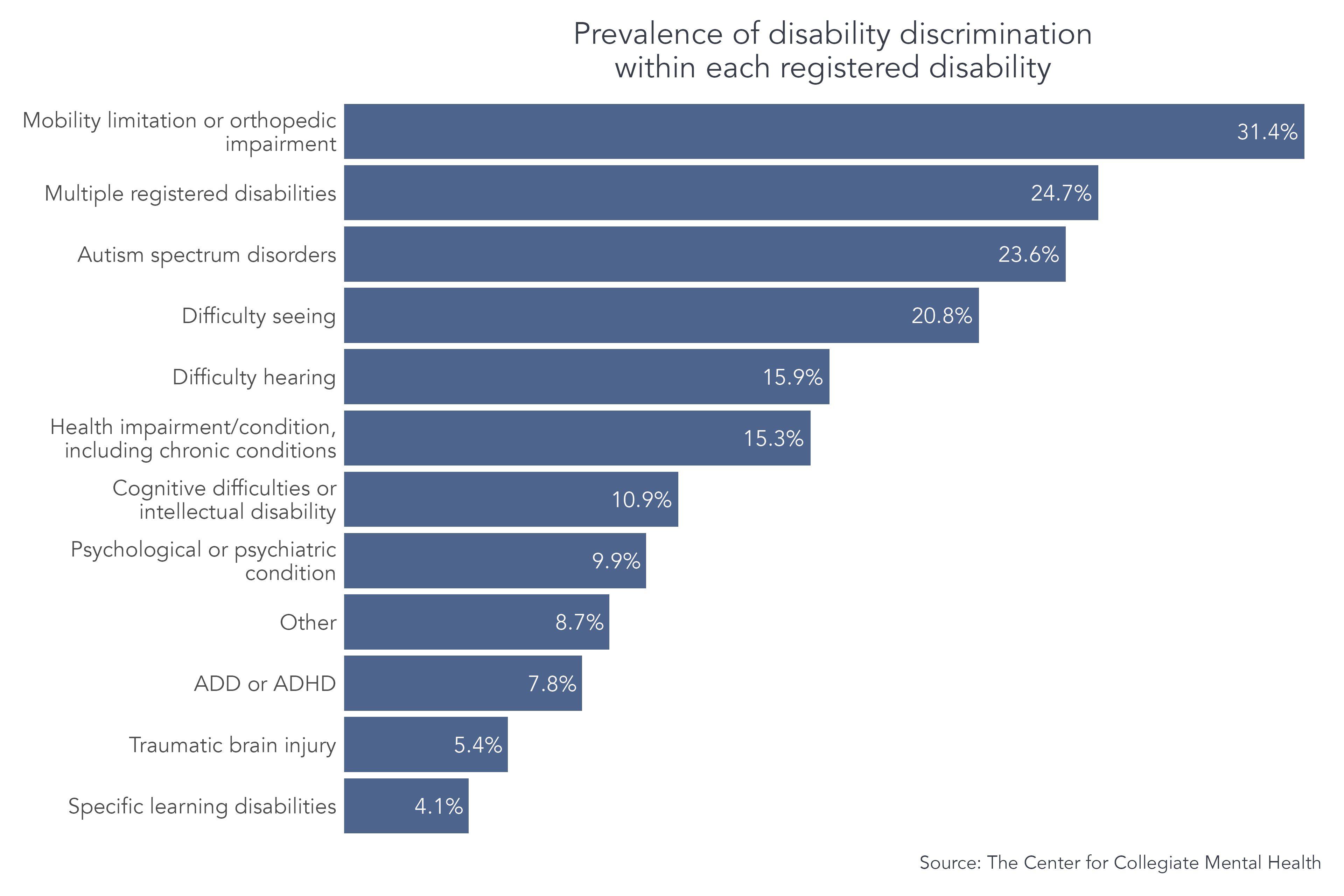
Summary and Future Directions:
- In the 2023 CCMH Annual Report, approximately 20% of all students entering counseling services nationally reported identity-based discrimination within the past six months. However, the current blog highlights that these rates vary significantly depending on the type of discrimination and identity status of the student. Students with marginalized identities reported notably higher rates of recent discrimination, which was a consistent pattern across all identities (i.e., nationality, race/ethnicity, religious affiliation, gender, sexual orientation, and disability status).
- Also in the 2023 CCMH Annual Report, experiences of identity-based discrimination were associated with increased general distress, social isolation, and suicidal ideation, which was compounded when students disclosed multiple areas of discrimination. The findings from this blog underscore that these impacts might be disproportionately felt by students with marginalized identities; thus, it is critical to consider these potential experiences/effects and how they intersect with students’ unique identities. Although discrimination is not a mental health problem, it provides vital environmental and contextual information that is clearly associated with more severe mental health symptoms. Additionally, awareness and further assessment of these experiences can potentially help clinicians understand their clients in context, enhance the culturally affirmative support they provide during counseling services, advocate for their clients, and identify adjunctive services that might help students self-advocate and directly address their experiences of discrimination at the individual and systemic levels.
- Additional research is warranted to further understand identity-based discrimination and its impact within collegiate settings. In future investigations, it might be helpful to further assess the frequency and sources of discrimination, as well as the potential differential impacts of the various types of discrimination within specific identity groups. Additionally, as more information related to discrimination is gathered over time, it will be important to evaluate the prevalence and impact of discrimination for students with various intersectional identities.
References
- Bravo, A. J., Wedell, E., Villarosa-Hurlocker, M. C., Looby, A., Dickter, C. L., & Schepis, T. S. (2023). Perceived racial/ethnic discrimination among young adult college students: Prevalence rates and associations with mental health. Journal of American College Health, 71(7), 2062–2073. https://doi.org/10.1080/07448481.2021.1954012
- Center for Collegiate Mental Health. (2024, January). 2023 Annual Report (Publication No. STA 24-147)
- Lee, R. T., Perez, A. D., Boykin, C. M., & Mendoza-Denton, R. (2019). On the prevalence of racial discrimination in the United States. PLOS ONE, 14(1), e0210698. https://doi.org/10.1371/journal.pone.0210698
- Oh, H., Stickley, A., Koyanagi, A., Yau, R., & DeVylder, J. E. (2019). Discrimination and suicidality among racial and ethnic minorities in the United States. Journal of Affective Disorders, 245, 517-523. https://doi.org/10.1016/j.jad.2018.11.059
- Paradies, Y., Ben, J., Denson, N., Elias, A., Priest, N., Pieterse, A., Gupta, A., Kelaher, M., & Gee. G. (2015). Racism as a determinant of health: A systematic review and meta-analysis. PLOS ONE, 1-48. https://doi.org/10.1371/journal.pone.0138511
This blog post was written by CCMH Data Analyst, Tyler White, M.A.


